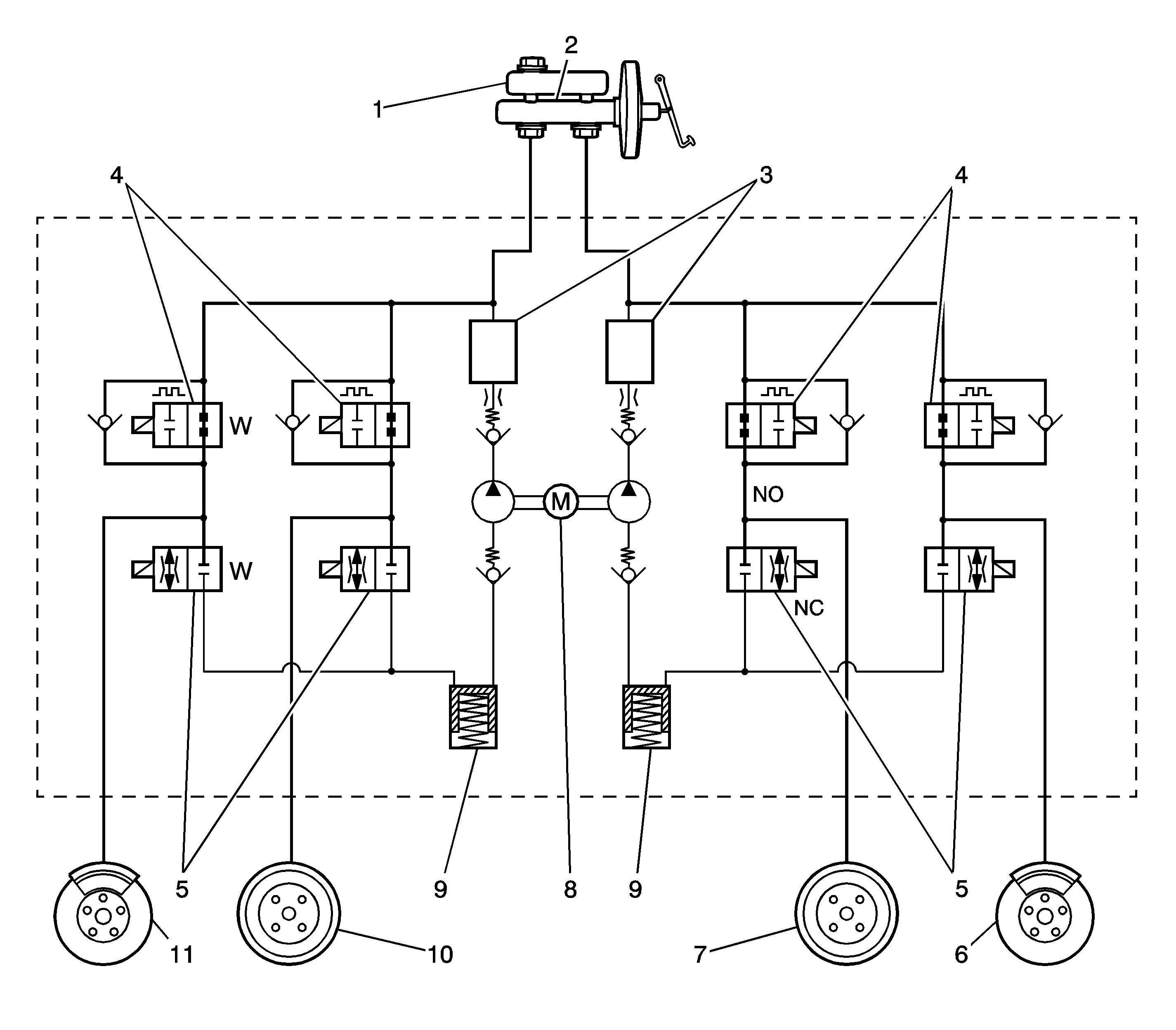When the electronic brake control module (EBCM) senses the wheel slip, the EBCM closes the inlet valve and keeps the outlet valve closed in the brake pressure modulator valve in order to isolate the system. This holds the pressure steady on the
brake so that the hydraulic pressure does not increase or decrease.
